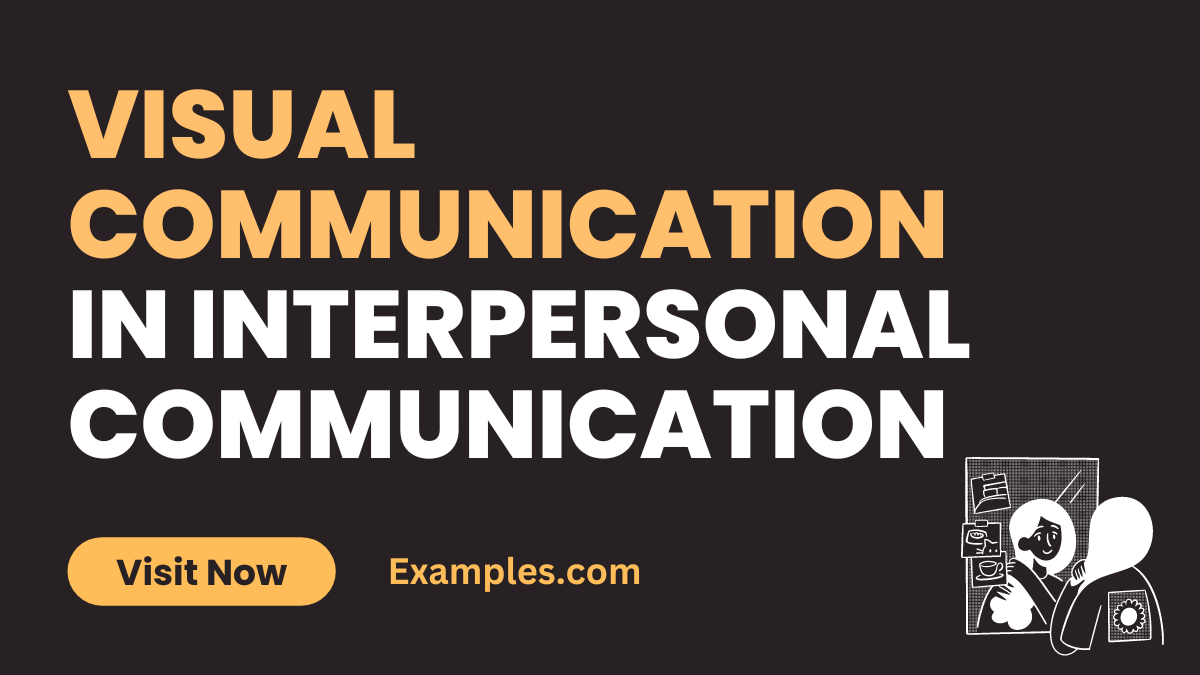19+ Visual Communication in Interpersonal Communication Examples
Visual communication plays a pivotal role in interpersonal interactions, transcending the barriers of verbal communication. This comprehensive guide delves into the nuances of using visual elements, from gestures to visual aids, in enhancing personal and professional relationships. Understanding the impact of visuals can significantly augment the clarity and effectiveness of your message. We explore various communication examples, demonstrating how visual cues can complement verbal messages, making interactions more engaging and memorable. Whether in a professional setting or personal conversations, mastering visual communication is a key skill in today’s visually-oriented world.
What is Visual Communication in Interpersonal Communication?
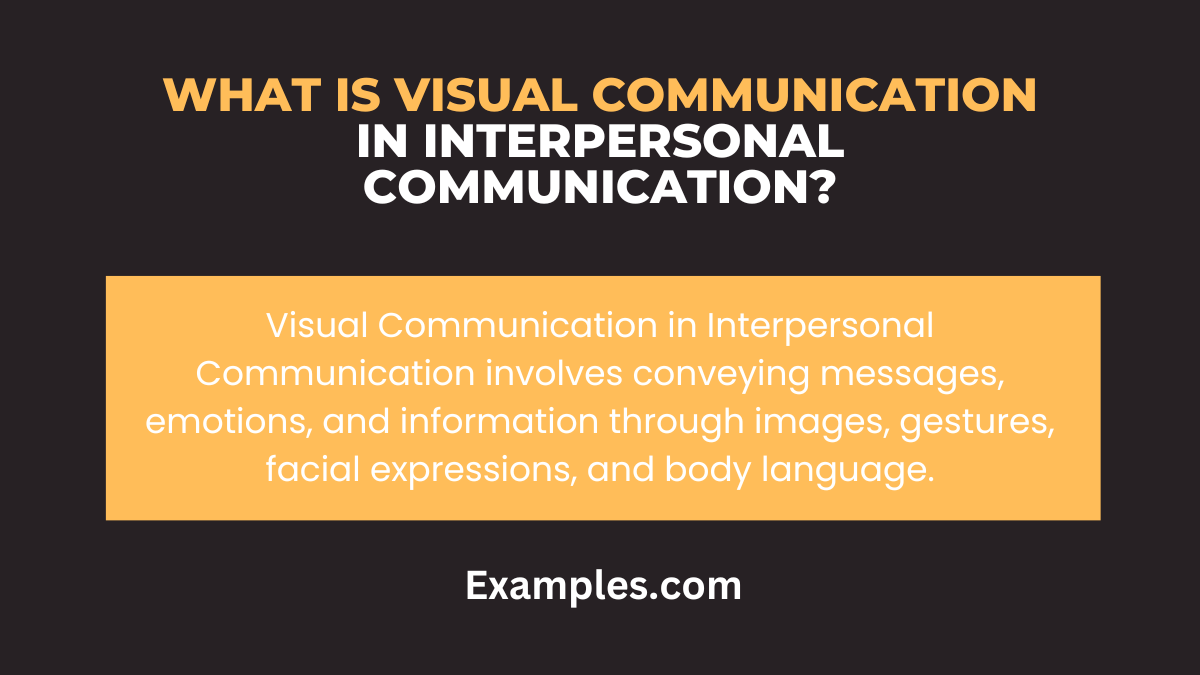
Visual communication in interpersonal communication involves the use of visual elements, like body language, facial expressions, and visual aids, to convey messages and enhance understanding. This form of communication is integral in conveying emotions, intentions, and information non-verbally. It complements verbal communication, often providing context or emphasis to spoken words. Visual cues can range from simple gestures to complex graphics, each playing a unique role in the way individuals interact and understand each other. In essence, it’s a silent yet powerful form of communication that enriches interpersonal interactions.
What is the Best Example of Visual Communication in Interpersonal Communication?
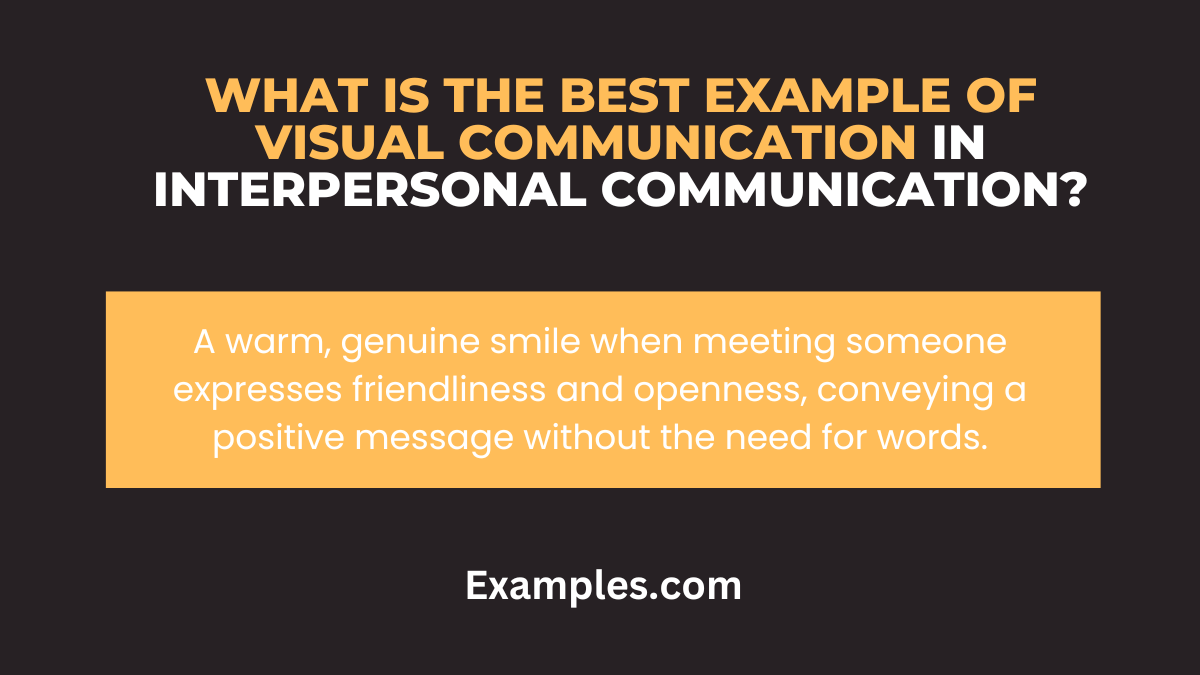
One of the best examples of visual communication in interpersonal communication is the use of facial expressions and body language during a conversation. These non-verbal cues can convey a wide range of emotions and reactions, often more powerfully than words. For instance, a smile can indicate approval, happiness, or encouragement, while crossed arms might suggest defensiveness or disinterest. In professional presentations, visual aids like graphs, charts, and images can significantly enhance the understanding of complex information. These visual elements, when used effectively, not only clarify and reinforce verbal communication but also engage the audience, making the communication process more dynamic and impactful. Understanding and harnessing these visual cues are essential in interpersonal communication, as they add depth and clarity to the interaction, facilitating better understanding and connection.
20 Examples of Visual Communication in Interpersonal Communication
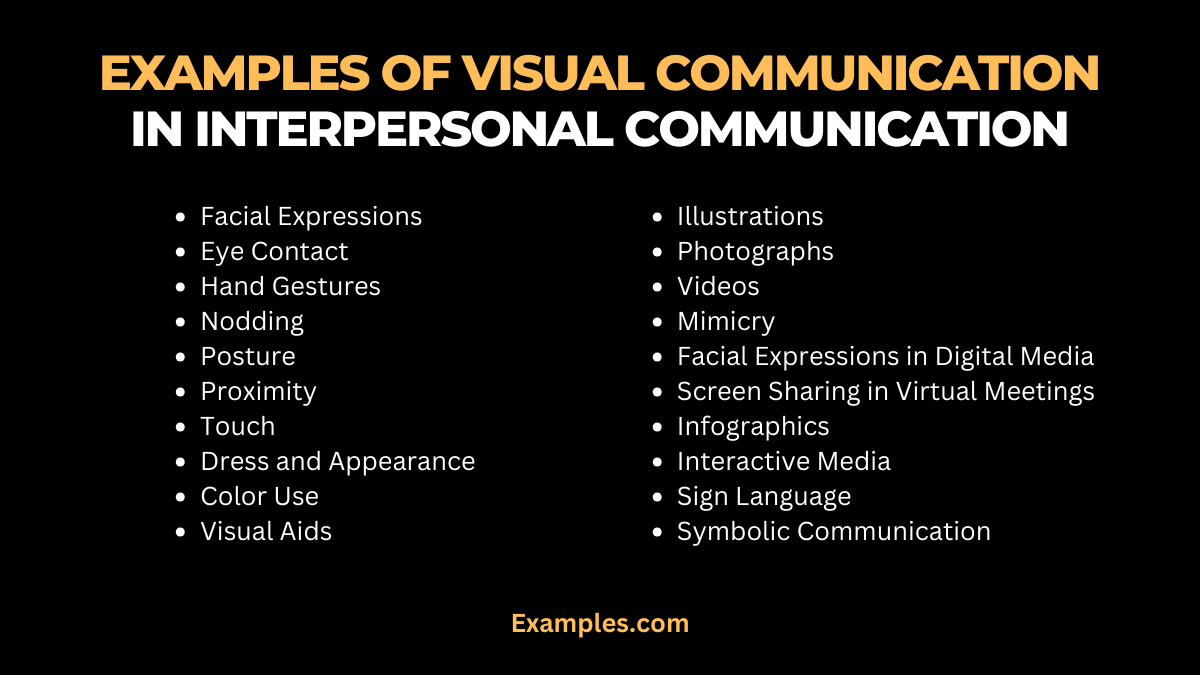
Visual communication in interpersonal communication plays a crucial role in conveying messages and emotions effectively. It encompasses various forms, from body language and facial expressions to digital media and visual aids. These visual cues complement verbal interactions, enhancing understanding and engagement. Mastering visual communication is essential for effective interpersonal communication, as it aids in expressing ideas clearly and building stronger connections.
- Facial Expressions: A smile can convey friendliness and openness.
Example: Smile gently when greeting someone to create a welcoming atmosphere. - Eye Contact: Maintaining eye contact shows interest and engagement.
Example: Look into the person’s eyes to show you are attentively listening. - Hand Gestures: Hand movements can emphasize points.
Example: Use open palm gestures when explaining an idea to appear more credible. - Nodding: Nodding indicates agreement or understanding.
Example: Nod while listening to show you are following the conversation. - Posture: An upright posture signifies confidence.
Example: Stand straight with shoulders back when presenting. - Proximity: The physical distance between people can indicate their relationship level.
Example: Stand closer to someone to show familiarity. - Touch: A gentle touch can express support or empathy.
Example: A pat on the back can be used to encourage someone. - Dress and Appearance: Clothing choices communicate personal style and professionalism.
Example: Dress formally for a business meeting to convey professionalism. - Color Use: Colors can evoke different emotions.
Example: Wear bright colors to appear more energetic and positive. - Visual Aids: Using slides or charts to support verbal communication.
Example: Use a graph in a presentation to clarify complex data. - Illustrations: Drawings or graphics to simplify concepts.
Example: Use a simple diagram to explain a process. - Photographs: Photos can convey messages stronger than words.
Example: Show a photo to share a personal experience more vividly. - Videos: Video clips can be powerful in storytelling.
Example: Use a short video in a presentation to engage the audience. - Mimicry: Copying someone’s body language to build rapport.
Example: Mirror the posture of your conversation partner to create a sense of connection. - Facial Expressions in Digital Media: Emojis and avatars in online communication.
Example: Send a smiley face in a text to show friendliness. - Screen Sharing in Virtual Meetings: Sharing your screen to walk others through a document or website.
Example: Share your screen to guide colleagues through a digital report. - Infographics: Using infographics to make complex information more digestible.
Example: Create an infographic to summarize project results. - Interactive Media: Engaging others through interactive digital content.
Example: Use interactive polls during a webinar to keep the audience engaged. - Sign Language: Communicating through hand signs for those who are deaf or hard of hearing.
Example: Use basic sign language to greet a deaf colleague. - Symbolic Communication: Using symbols to convey a message.
Example: Wear a badge to show support for a cause.
Importance of Visual Communication in Interpersonal Communication
Visual communication significantly enhances interpersonal interactions in numerous ways:
- Enhances Understanding: Visual cues can help clarify verbal messages, making them easier to understand.
- Non-Verbal Cues: It provides non-verbal cues which are crucial for comprehending emotions and intentions.
- Engagement: Visuals can make communication more engaging and memorable.
- Cultural Significance: Visuals can transcend language barriers, making communication more inclusive in diverse cultural settings.
- Emotional Impact: Visual communication can have a strong emotional impact, influencing attitudes and decisions.
- Efficiency: Visual aids in communication can convey complex information more efficiently than verbal explanations alone.
- Clarity: Visuals can help reduce misunderstandings and ambiguities in communication.
- Feedback: Visual cues from the audience provide immediate feedback to the speaker.
- Persuasion: Effective use of visuals can be persuasive and influential in decision-making processes.
- Memory Retention: People tend to remember visual information better than verbal or written information.
Characteristics of Visual Communication in Interpersonal Communication
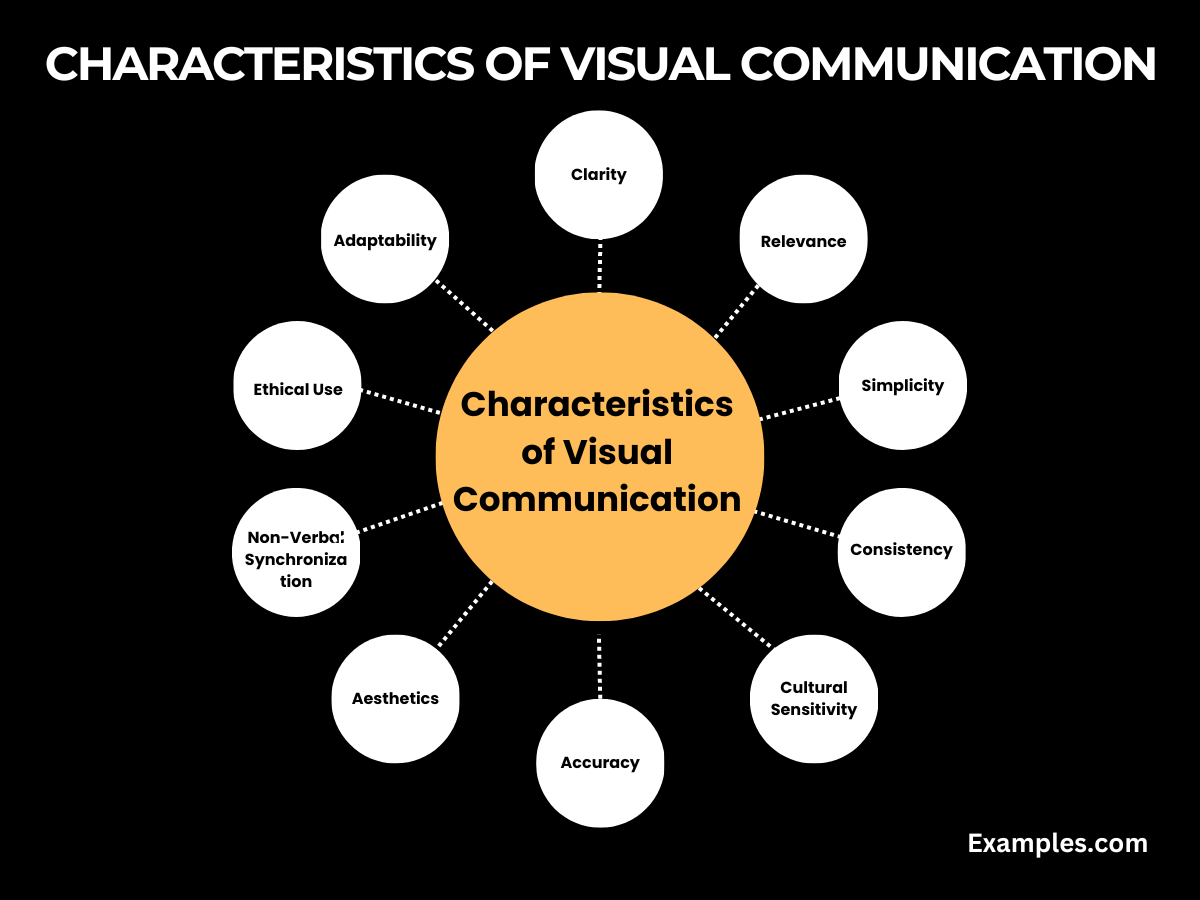
The characteristics of visual communication in interpersonal interactions include:
- Clarity: Visual communication should be clear and easily understandable.
- Relevance: Visuals must be relevant to the topic of conversation.
- Simplicity: Simplicity in design and presentation ensures that the message is not lost in complexity.
- Consistency: Consistent use of visual styles and symbols aids in better comprehension.
- Cultural Sensitivity: Visual communication should be culturally sensitive and appropriate.
- Accuracy: Visual information must be accurate and reliable.
- Aesthetics: Visually appealing communication can engage and maintain the audience’s attention.
- Non-Verbal Synchronization: Visual communication should complement and synchronize with non-verbal cues.
- Ethical Use: Visuals should be used ethically, without misleading or manipulating the audience.
- Adaptability: Visual communication should be adaptable to different contexts and audiences.
In conclusion, visual communication in interpersonal interactions plays a vital role in enhancing understanding and engagement. It transcends verbal and written forms of communication, offering a unique and powerful way to convey messages and emotions. By utilizing visual elements effectively, individuals can improve their communication skills, making their interactions more impactful and memorable.
For further exploration of the significance of visual aids in communication, particularly in educational settings, visit Edutopia’s article on “Making the Most of Visual Aids“??. This resource provides insightful strategies and considerations for effectively integrating visual elements into teaching and presentations. Additionally, Microsoft 365 offers a comprehensive overview of “5 Reasons to Use Visual Aids for Speeches and Presentations,” highlighting the importance of visual elements in capturing and maintaining audience attention. Discover more about enhancing your presentations with visuals.



